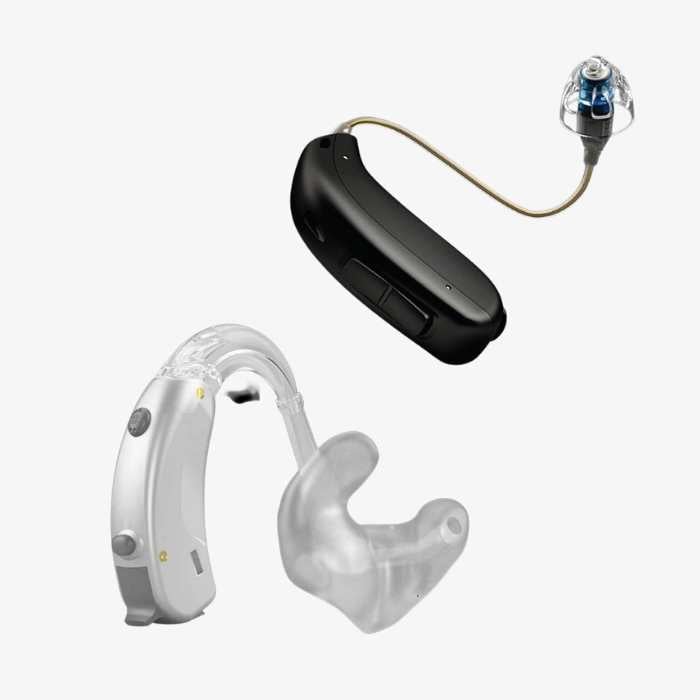You may have noticed that a friend has a hearing aid with a special end piece that fits in their ear.
Or maybe you’ve seen one of your favorite musicians on stage wearing something colorful in their ear. Ever wonder what these pieces are for or how they are made? We’ve got you covered!
In this article, we’ll explore everything you need to know about custom earmolds for hearing aids and beyond.
Prefer to watch?
See our full breakdown of earmolds and domes here 👇
Let's start with a look at the various hearing aid styles that allow custom earmolds.
There are three main styles to consider as you look for the right hearing aid.
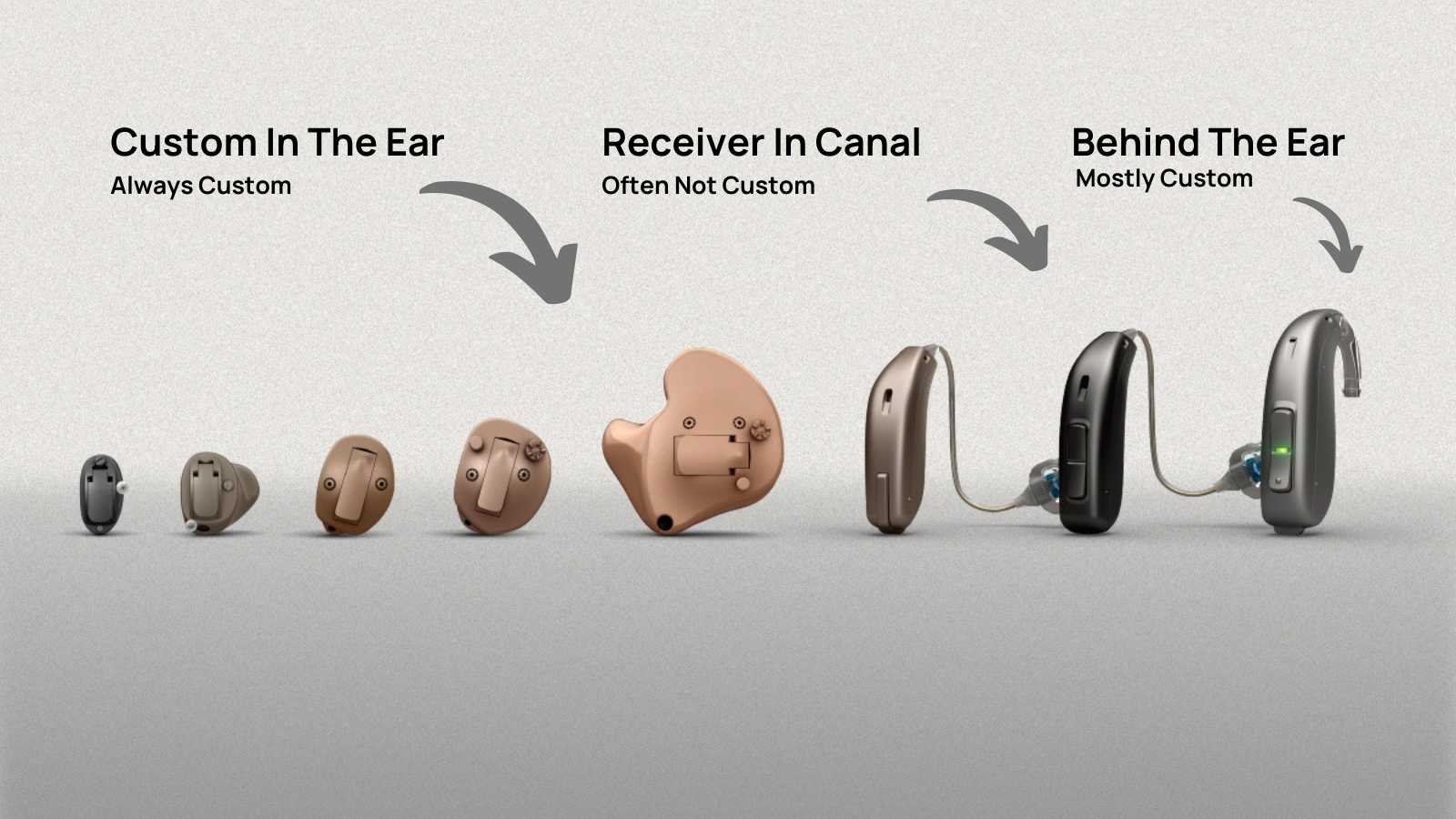
Receiver-in-the-canal (RIC) - Most Common
This style of hearing aid has a little speaker that is located directly in the ear canal, while the rest of the hearing aid parts sit behind the ear. The nice thing about it is that the sound source is very near the eardrum, where it needs to go. On top of that speaker, a dome tip or earmold will be used to couple the speaker to your ear and sit properly in your ear canal.
RIC hearing aids are the most common style across all brands and manufacturers. Many people with mild or moderate hearing loss choose open domes instead of custom-earmolds for their RIC devices. Open domes allow more ambient sound into the ear and are more discreet.
RIC hearing aids can be fit with custom earmolds (usually for those with severe hearing loss or hearing loss in low frequencies.
Note: if you’ve seen any of these acronyms: RIC, RIE, RITE - they all mean the same thing. Essentially, the receiver (another word for the speaker) is located in your ear.
Behind-the-ear (BTE) - Most Powerful
Slightly larger with a piece that sits behind the ear and a tube that pushes sound from your hearing aid into the ear canal. BTE styles are often prescribed for those with more significant hearing loss.
This style of hearing aid has the speaker and all other parts of the device located in the piece that sits behind the ear. The sound is then funneled to the ear through either: 1) an earmold and tubing or 2) a slim tube and dome tip.
In most cases, a BTE hearing aid is the best option for more severe hearing loss. An earmold with tubing will be the best option here. Closing off the ear canal with a custom earmold helps achieve more amplification without risking feedback.
Custom in-the-ear (includes IIC, CIC, ITC, half shell, full shell) - Most Discreet
Hearing aid wearers can also choose a hearing aid that goes inside the (without any piece behind the ear). This style stays clear of masks and glasses and can be entirely invisible. Custom in-the-ear devices often offer fewer features in terms of connectivity, microphone configuration, and sound quality.
Most premium hearing brands require a custom earmold to prescribe in-the-ear styles of hearing aids. Signia Silk and Eargo are two brands that buck this trend with read-to-wear products that sit inside the ear.
Should you get custom earmolds or an off-the-shelf hearing aid dome?
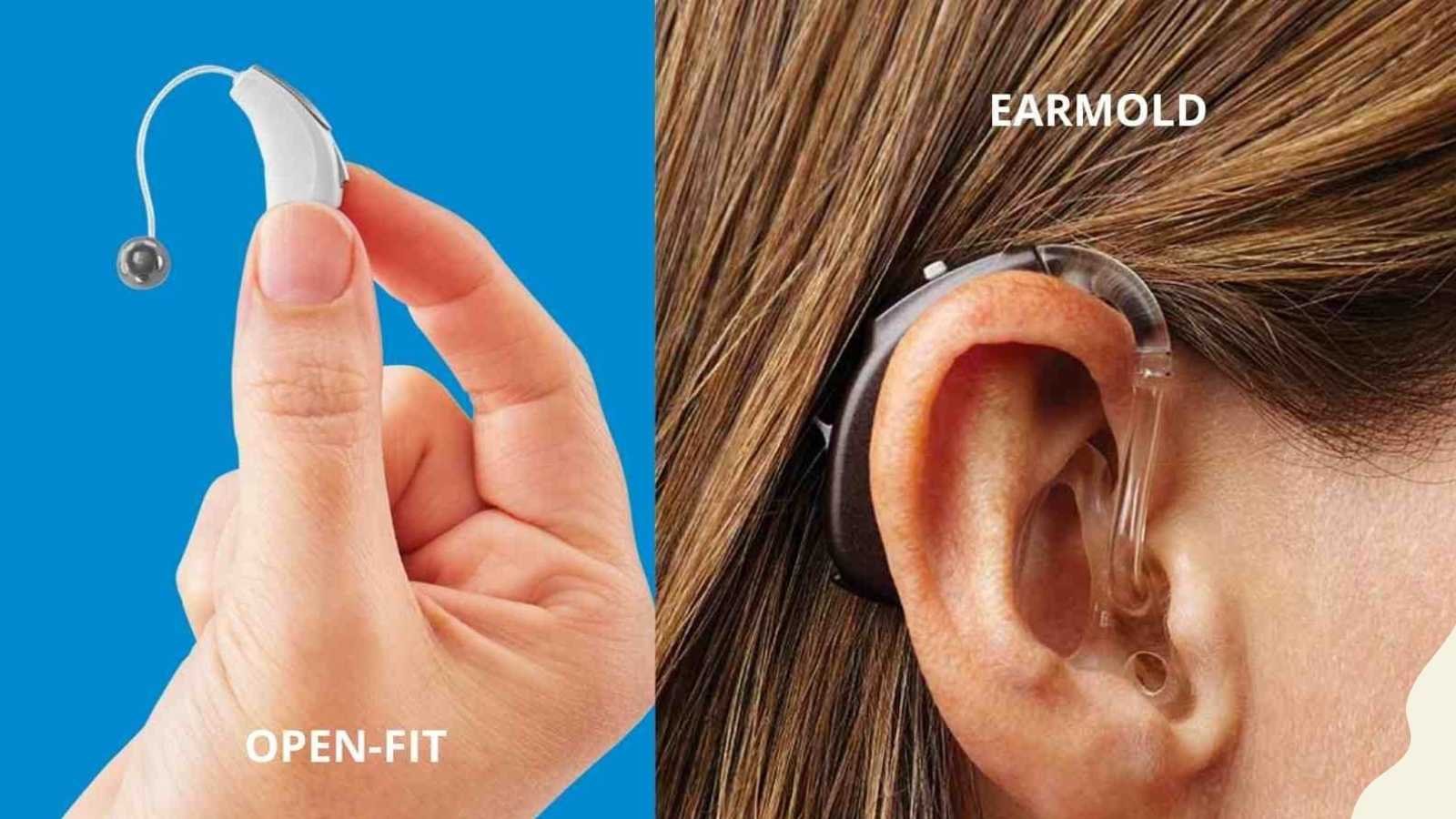
What is the difference between earmolds and dome tips? In short, dome tips are generic pieces, while earmolds are tailored to your ear shape. Think of it like buying clothes off the rack versus having something made by a tailor, especially for you.
The Positives For Earmolds
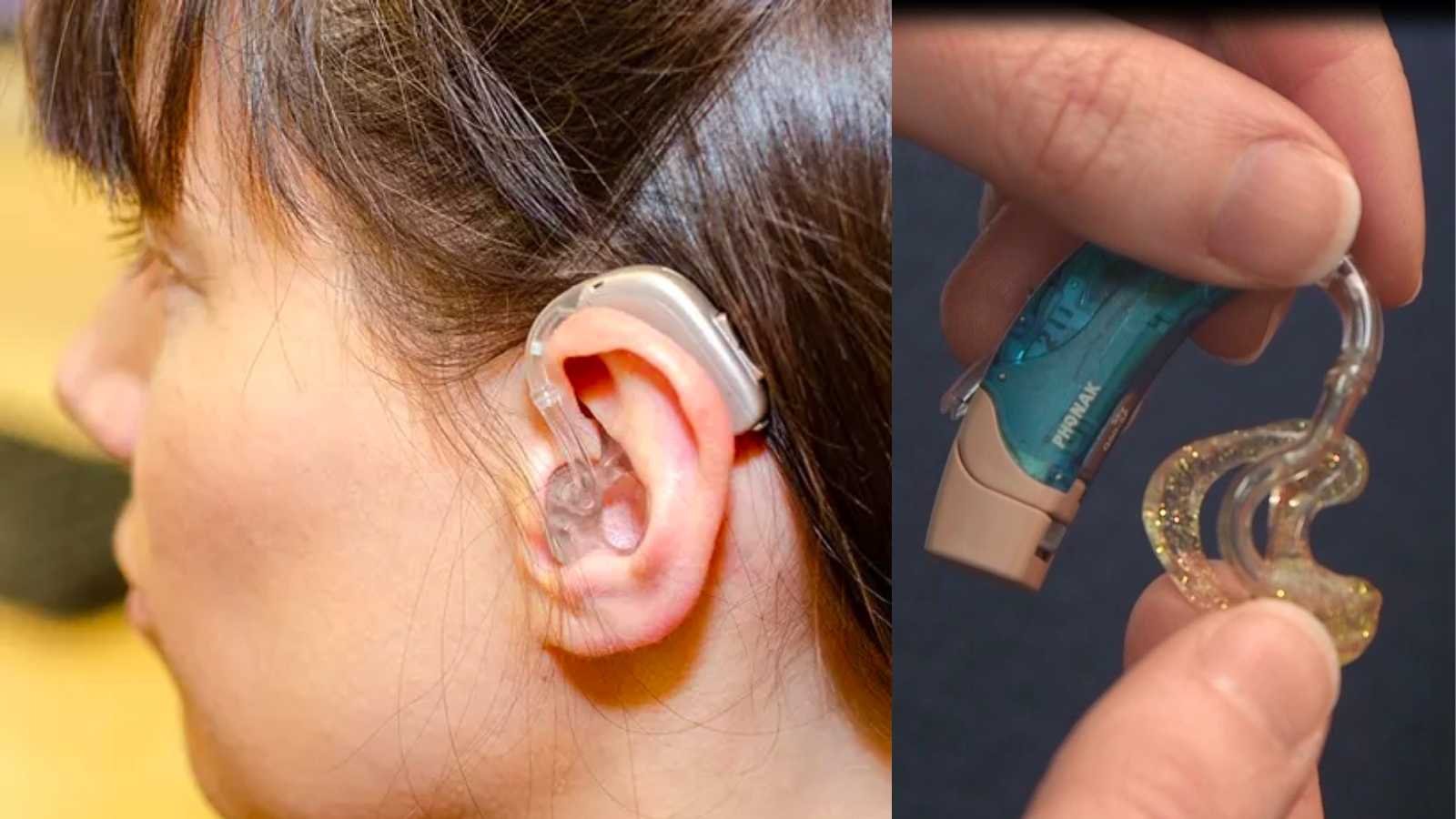
- Made specifically for your ear shape
- Improved amplification and control
Earmolds are custom pieces made of materials like acrylic or silicone and fit snugly into the ear canal. How are they made? A professional will take an impression of your ear, which is then used to create a 3D model of the perfect earmold for your ear shape and size.
One of the main advantages of earmolds is that they provide a tighter seal in the ear than dome tips, which can improve sound quality. Additionally, earmolds are typically less likely to fall out than dome tips because they are custom-made to fit your ear like a glove.
The Positives For Rubber Domes
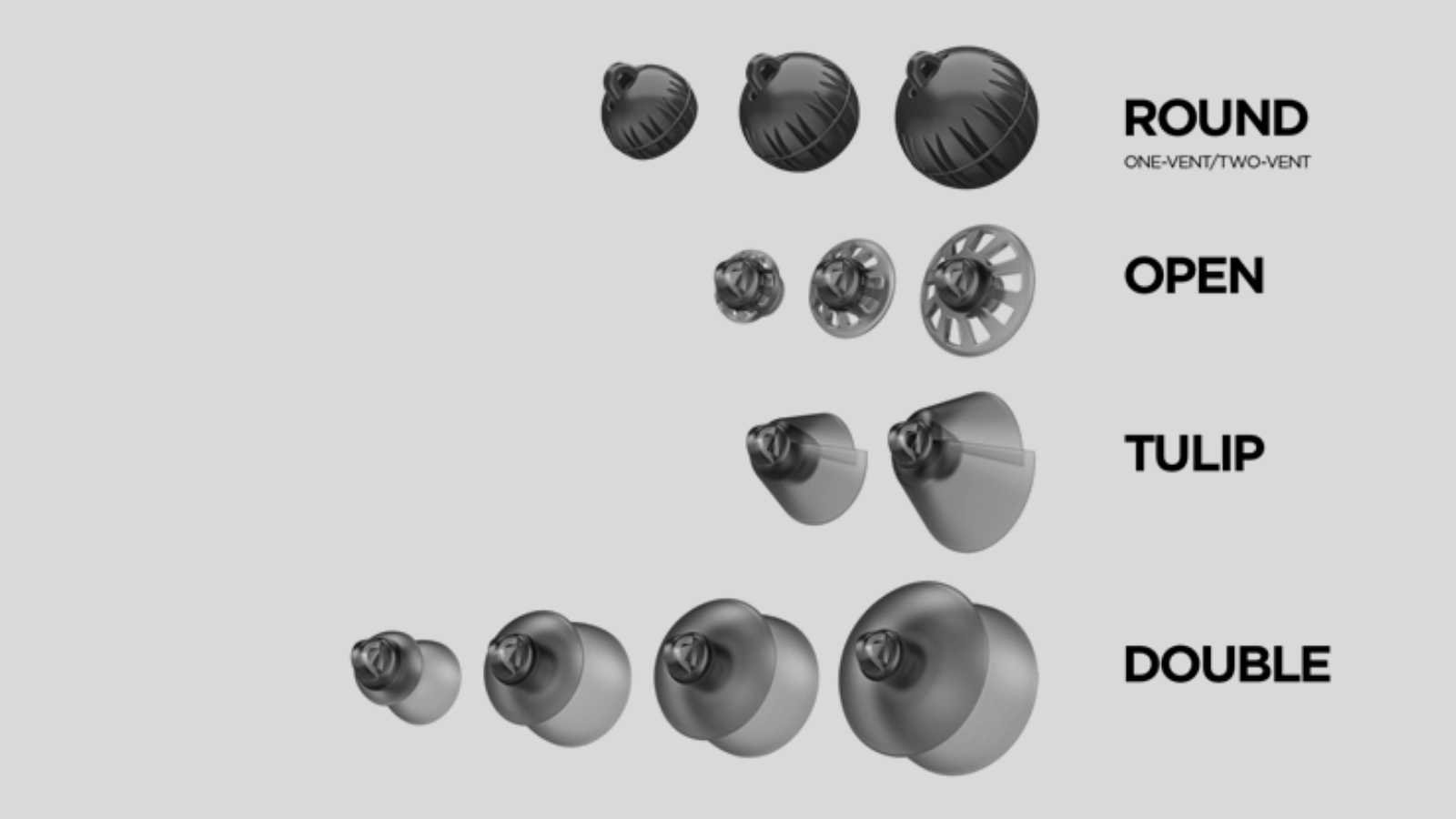
- Universal pieces made to fit a range of ear sizes
- Can easily be replaced
- Allow more natural hearing
Dome tips are generic pieces that help your hearing aid attach to your ear. They come in a range of sizes and styles, and most are made of silicone material. In general, the more hearing loss a person has, the more the ear canal needs to be sealed up to provide enough amplification (with a closed or power dome).
Those with normal to near normal hearing, especially in the low frequencies, will do best with a more open earpiece.
This piece has holes to allow some natural hearing to come through for better sound quality.
A tulip dome tip can work for a variety of ear shapes, sizes, and hearing loss. The shape of it is more flexible, so it can work for a wide range of people.
Who can benefit from custom earmolds?
- More than a mild hearing loss
- Unusual ear canal geometry
There are two main reasons that people wear earmolds: sound quality and fit.
An earmold is a customized piece that can be adapted to your specific hearing loss as well as the specific size and shape of your ear. For those with more severe hearing loss, a well-fitting earmold helps to create enough volume without leaking sound out or causing undesired whistling or feedback.
Earmold For Flat Hearing Losses
For those with a flat moderate or greater hearing loss, an earmold is the best option. Your hearing aid will be able to send enough sound to your eardrum to provide the benefit you need with an earmold that seals the ear canal well.
Up-sloping Ear Canals
The shape of your ear canal is like a thumbprint and can even differ from a person’s right to left ear. Some ear canal shapes will benefit more from an earmold, even if their hearing loss is less severe. For example, if the ear canal curves upward, an earmold with an additional piece, called a ‘canal lock’ or ‘helix lock,’ will be the best option for comfort and retention.
This is because ear canals that are up-sloping tend to slide out when chewing or moving the jaw. Think of it a little bit like a kickstand on a bicycle. That extra piece helps to keep the earmold comfortably in place.
Steeply Sloping Hearing Losses
An earmold can be customized to amplify at targeted frequencies based on your hearing loss while allowing natural hearing to come through.
For example, a number of people with sensorineural hearing loss don’t need extra volume in the low frequencies but can benefit from more volume in the high frequencies.
What does that mean? The best sound quality for this type of hearing loss will be achieved by allowing low frequencies (bass sounds) to come in naturally through a vent, or small hole, in the earmold.
Think of it this way: you know that feeling when you put in earplugs, and everything sounds muffled? Your own voice sounds ‘boomy’ in your head. This is also known as the ‘occlusion effect.’
That has a lot to do with the low frequencies being trapped due to the earplug instead of the way we usually hear, with those sounds exiting the ear canal.
A vented earmold combines natural low-frequency hearing while allowing the hearing aid to funnel enough sound without risking that pesky feedback sound.
A closer look at earmold styles.
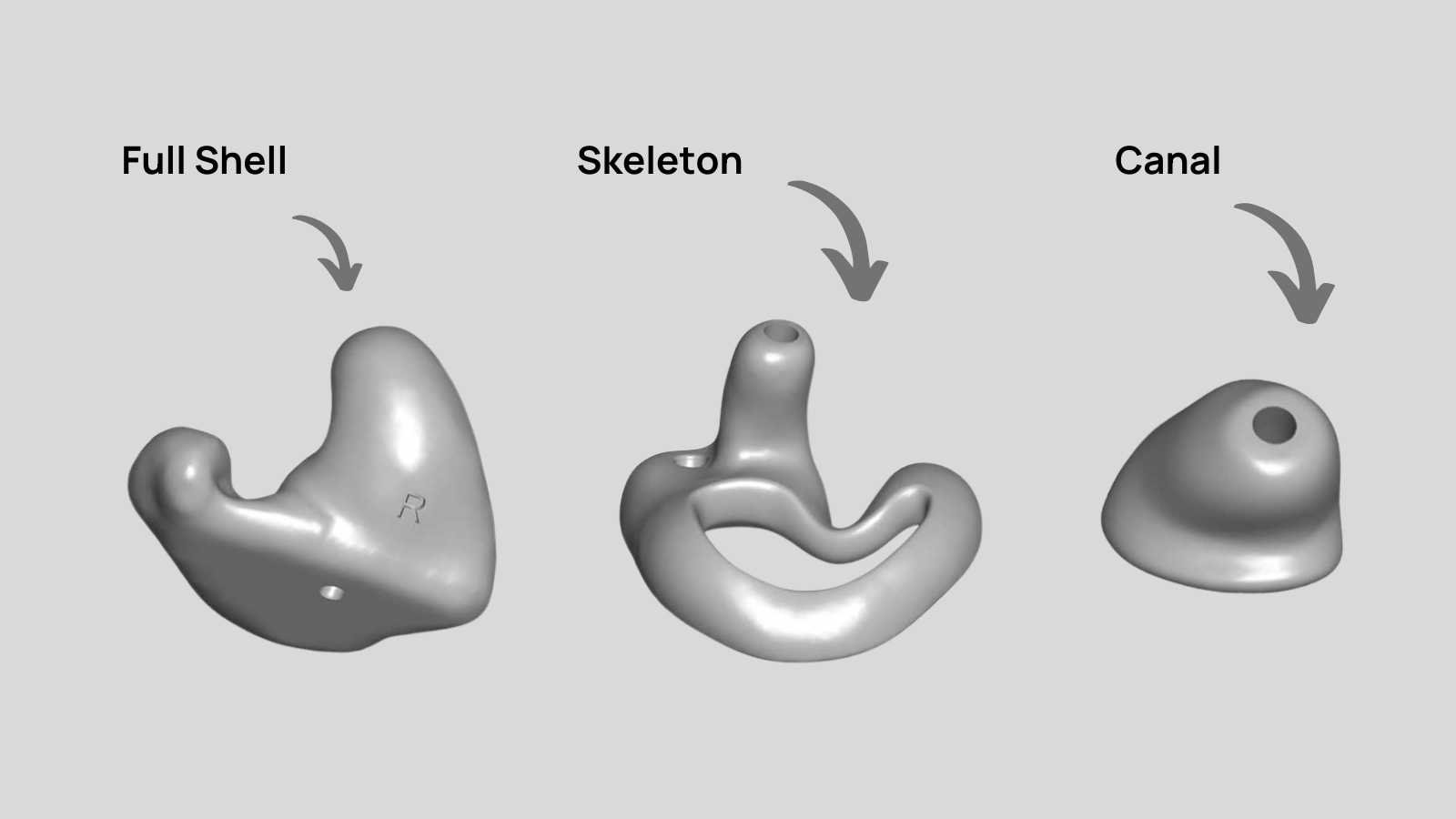
Full Shell
- Best for severe to profound hearing loss.
Skeleton
- Common for moderate to severe hearing loss.
- Slightly easier to remove than a full shell.
Canal
- Mild to moderate hearing loss.
- More cosmetically appealing.
These different styles of earmolds are available for both RIC as well as BTE styles. As mentioned above, the main difference is whether the tubing or the speaker is directly attached to the earmold.
An earmold on a RIC hearing aid will either be: encased or detachable.
If the earmold is encased, that means that the earmold and speaker are attached together as one unit. The nice thing about this is that it is a little bit sleeker and may be more cosmetically appealing. However, if the earmold or receiver is not working correctly, the whole piece will need to be sent in for repair. A detachable earmold can be separated from the earmold for easier cleaning, maintenance, or repair. The trade-off is that this piece may be a bit larger than the encased version.
Earmolds in Hearing Protection

As you may have guessed, the goal of hearing protection is to block out sound from coming into your ear. The best way to accomplish this? By tightly sealing the ear off to block out sound. An earmold is a perfect way to reduce unwanted noise or loud sounds.
Earmolds can be made to fit any size or shape of the ear, and they can be customized to include different colors and designs. Part of the fun in getting some custom hearing protection is selecting fun colors.
Types of custom earmolds come in a variety of use and styles, ranging from custom musician’s earplugs, swim plugs, sleep plugs, or even in-ear monitors. The material used and specific features will vary depending on the intended use. For example, swim plugs are made from a material that allows them to float in water. That way, if they ever come out, it’s not hard to find them!
In-ear monitors are custom-made devices that allow musicians to hear themselves and their band while still blocking out the surrounding noise.
Newscasters also wear a similar earpiece to allow them to hear important updates. You’ve probably also seen the Secret Service wearing these devices. Who knew that ears could be so cool?



